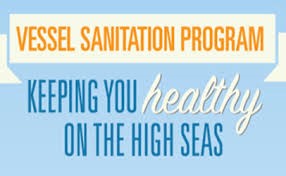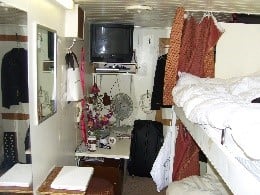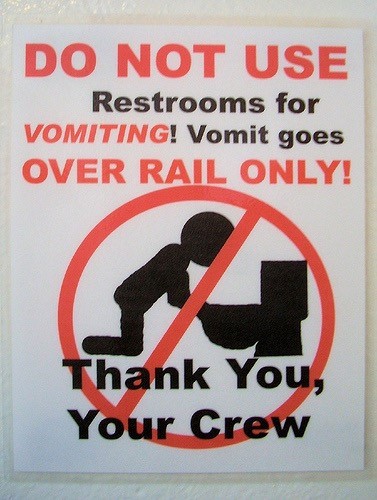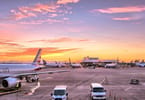The cruise industry before COVID-19 generated $134 billion in travel and tourism revenue prompting the Cruise Lines International Association (CLIA) to paint a rosy future. This was before COVID-19.
Before COVID-19, almost 351 million posts with the tag #travel on Instagram were generated by happy voyagers. Passengers supported the wellness programs including oxygen bars, healthy menu choices, and fitness opportunities. Onboard cooking classes and climbing activities were well-received. Although the cruise industry is noted for polluting the waters in which it sails, the industry determined that its work with local communities helped to preserve heritage sites and decreased its environmental footprint. An increasing number of women were traveling and feminist landmarks were included in itineraries. Solo travelers were also a growth market for the industry, vigorously expanding beyond the senior/mature frequent voyagers.
Before COVID-19 each year, over 30 million people spend their time and money on over 272 CLIA-member cruise ships. Before COVID-19, the industry supported 1,108,676 jobs representing $45 billion in wages and salaries, generating $134 billion worldwide (2017) and CLIA forecasted a rosy future for the industry finding social media and restorative travel increasing, noting that eight of ten CLIA-certified travel agents expected growth in cruise sailings for 2020.
Heads Up: Petri Dish
Even before COVID-19, bloggers, newspaper and magazine writers, government agencies and medical/health care professionals reported, profusely and vividly, about the potential for health and medical emergencies while onboard a ship; however, this did not deter hordes of people from handing over their credit and debit cards to get onboard.
Even COVID-19 has not been a deterrent. Governments, educational institutions, public health officials, as well as medical and health care professionals address the dangers cruise ships present and the health-related dangers to passengers and crew; however detailed and disastrous the news offering domestic and international warnings, people from around the globe are anxiously waiting for cruise lines to reenter the travel marketplace.
COVID-19 Onboard

A recent COVID-19 report from the World Health Organization (WHO) determined that global case numbers reported that as of August 20, 2020, a total of 22, 728,255 cases had been confirmed worldwide, resulting in 793,810 deaths. As of August 1, 2020, cruise ships reported 22,415 cases of COVID-19, with 789 deaths.
According to the Center for Disease Control (CDC), the cruise ship environment is perfect for the spread of disease. Current scientific evidence points to the fact that ships pose a greater risk of COVID-19 transmission than other environments because of:
- Large population density onboard (typically more compactly populated than cities or other living situations)
- Living and working conditions of the crew (close quarters in a partially enclosed environment where social distancing is almost impossible to achieve)
- Asymptomatic but Infected passengers spreading the virus from country to country through off-ship sight-seeing excursions
- Covert spreading of the virus among crew from one voyage to another and to global communities
- People 65 + at a higher risk for severe consequences from COVID-19, a major target market for cruise ship passengers
- Limited medical resources
Kedu ihe mere
Since March 2020, the major outbreaks are linked to three cruise ships and there are connections to additional cruises across the USA. The transmissions were reported across multiple voyages from ship to ship by crew members, impacting on crew and passengers.
Although the first major transmission of COVID-19 is attributed to Wuhan, China, it is the denial and then slow response of the World Health Organization, the current President of the United States, Donald Trump, and the initial disregard and then feeble response of the cruise industry that enabled the virus to gain traction and spread rapidly to over 187 countries and territories.
The Diamond Princess recorded the first and largest cluster outside mainland China (quarantined in the port of Yokohama, Japan) on February 3, 2020. On March 6, COVID-19 was identified on the Grand Princess off the coast of California (the ship was quarantined). On March 17, confirmed COVID cases were identified on at least 25 other ships.

The Center for Disease Control (CDC) started to issue No-Go warnings on February 21 to Southeast Asia. On March 8, the warning was broadened to include deferring all cruise travel worldwide for people with underlying health conditions and/or 65+, and finally, on March 17, the CDC recommended that all cruise travel be deferred worldwide.
The Diamond Princess and Grand Princess had more than 800 COVID-19 cases; 10 people died. From February 3-March 13 in the US, approximately 200 cases were confirmed among cruise travelers from multiple ships accounting for 17 percent of total US reported at the time. On the Diamond Princess over 700 people were infected; 14 people died. Since February, multiple international cruises have been implicated in reports of COVID-19 cases, including at least 60 cases in the US from Nile River cruises in Egypt.
Initial Attempts
Public health officials noted the outbreak and speculated on the contagion opportunities and attempted to limit transmission among passengers and crew. Responses included: coordination of stakeholders across multiple sectors including various US government departments and agencies, foreign minister of health, foreign embassies, state and local health departments, hospitals, laboratories, and cruise ship companies.
Public health officials anticipated transmission during disembarkation and repatriation. Restrictions included limitations on travel by passengers and crew, infection protection and control (including PPE for medical and cleaning staff), disinfection of cabins with suspected infection, information sharing, and contact investigation among US returning travelers suspected of having or been exposed to the virus.
Biggest Problem: Ship Design
One of the many reasons that the control of COVID-19 and other infectious diseases on board a ship is so challenging and difficult to contain is the design of the ship. The qualities that make it less likely to sink actually increases the transmission rate of breath-borne illness among passengers and crew.
To protect a ship from flooding, the spaces are divided into numerous small compartments with relatively poor ventilation as compared to other enclosed environments (i.e., homes, offices, stores). If a ship begins to sink, the spaces can be quickly sealed and closed to keep the vessel afloat; however, when a ship experiences an outbreak of a breath-borne disease, the closeness of people in these tight and poorly ventilated compartments creates an ideal environment for this type of disease to transfer rapidly among passengers and crew.
Adequate or Not

CDC recommendations suggest that the cruising industry develop, implement and operationalize actionable and robust plans to prevent, mitigate, and respond to the spread of COVID-19, when/if they are permitted to restart. The steps run the now-familiar gamut from training, monitoring, testing, distancing, isolation and quarantine to enhancing medical staffing, availability of PPE, onshore evaluation and hospitalization – all the way through to notification of local, state and national government, and public health authorities when a passenger and/or crew member becomes ill.
Transformation Likely/Unlikely

In order to mitigate the spreading of COVID-19, each crew member should have single-occupancy accommodations with private bathrooms. The crew should wear face masks at all times when outside of individual cabins. Meal service should be modified to facilitate social distancing by reconfiguring dining room seating, staggering meal times, and encouraging in-cabin dining. Self-serve dining options should be deleted.
While shore excursions are an important revenue source, they present opportunities for crew and passengers to get and/or spread disease, so these opportunities should be minimized. Social norms, such as handshaking and hugs should be discouraged while hand hygiene and coughing etiquette is encouraged. For both passengers and crews, hand-washing facilities should be well-stocked with skin-friendly soap, paper towels and waste receptacles.
Even before the trip, passengers and crew should be encouraged to eliminate the use of cigarettes, e-cigarettes, pipes, and smokeless tobacco as they can lead to increased contact between potentially contaminated hands and mouth; avoiding these products may reduce the risk of infection.
ọrụ
If you get sick, ship operators are responsible for the medical care of infected persons onboard, including those who need hospitalization. For emergency medical attention not available onboard it is the ship operators who coordinate with the shore-side healthcare facility, port authority, US Coast guard and state/local health department, as required.
Passenger Check List. What to Expect
- Medical transport to shore-side medical facility arranged in advance and in coordination with receiving facility. – Sick persons must wear face masks during disembarkation process and throughout the transport
- All escorting personnel should wear PPE
- Gangway cleared of all other personnel until sick person(s) disembark
- Pathway for disembarkation, any potentially contaminated surfaces (i.e., handrails) also the path and any equipment used (i.e., wheelchairs) should be cleaned and disinfected immediately after disembarkation
Sea Sick. No Surprise
Even before COVID-19, people got sick and some died at sea. According to the Broward County Medical Examiner’s office, where any deaths on cruise ships that stop at Fort Lauderdale’s Port Everglades must be reported, approximately 91 people have died on cruise ships that arrived in Fort Lauderdale between 2014 and 2017. Anonymous sources report that up to three people die per week on cruises worldwide, especially on lines with older passengers and many of the fatalities are from heart attacks.
Examfọdụ Ihe Nlereanya

image courtesy of barfblog.com
In January 2019, CNN reported that on the decks of four Carnival cruise ships (studied over a 2-year period), the concentration of particulate matter measured was “comparable to concentrations measured in polluted cities, including Beijing and Santiago” (Ryan Kennedy, Assistant Professor, Johns Hopkins University, Bloomberg School of Public Health). Ship exhaust contains harmful constituents including metals and polycyclic aromatic hydrocarbons, many of which have toxic, possible cancer-causing properties.
Another incident in January 2019, The Insignia (Oceania) failed sanitation inspection conducted the US Public Health inspectors in December 17, 2018. The report found that numerous food contact surface areas on the ship were heavily soiled, dusty and dirty; refrigerator units were not built to food equipment standards and there were flies and other pests found in food service areas. Potentially hazardous food items were stored and prepared at improper temperatures. Potable water bunkering was not property tested for pH or halogen and testing equipment was out of order.
On February 14, 2019, the MSC Divina’s captain reported a high incidence of gastrointestinal problems onboard. On February 15, 2019 the CDC reported that the Viking Star had 36 (of 904 passengers) and 1 (of 461 crew) were sick and on February 21, 2019, the CDC reported that 83 (of 2193) passengers and 8 (of 905 crew members) were reported sick.
In March 2019, onboard the Silja Galaxy, a 50-year-old man was arrested on suspicion of rape on a ferry between Stockholm and Finland. PR Newswire reported that a female crew member was drugged, punched, beaten, strangled and raped while working on Norwegian Cruise Lines the M/V Norwegian Pearl. The attacker was arrested by the police and pleaded guilty.
NCL was served with a lawsuit claiming that over the course of the many years preceding the rape, there were many incidents of sexual harassment and sexual battery, including rape of crew members and passengers on NCLs fleet of cruise ships. The suit claims that NCL knew that date rape drugs had been involved in other shipboard rapes of female crew members and passengers.
The CDC investigated 13 outbreaks of gastrointestinal bugs like E Coli and norovirus onboard cruise ships while influenza outbreaks and chickenpox are fairly common. In May 2019, measles were noted on a Scientology cruise. In the same year, Carnival Cruises failed sanitation inspections for offenses that included “brown water” discharge from showers in the medical center and unclean food service utensils.
Ọ tọrọ atọ

One of the many problems facing sick passengers and crew on a cruise ship is that there is little recourse; you are figuratively a prisoner on the ship and dependent on contractor physicians who charge high fees that most health insurance plans are unlikely to cover.
It is important to note that cruise ship doctors are not usually specialists; the medical team is hired to deal with issues like norovirus and are unlikely to be emergency room qualified. Clinic hours are limited (i.e., 9 AM-Noon; 3-6 PM) and on port days the hours may be more restricted. The doctors may not be fluent in English and this may impede assistance in critical situations.
Before making a reservation and locking into a cruise reservation, check with your health insurer to determine if coverage includes offshore medical issues; ask the question, “If I get sick/injured, how am I covered?”
Most passengers do not buy travel insurance, if they did, they would save thousands of dollars. A cautionary note: It is best to review options with independent providers rather than default to travel insurance from the cruise ship company or the travel agent.
Kedu ihe m kwesịrị ịme?
Have an accident? Passengers have to be their own investigator and document the incident with pictures (videos) of where the fall occurred and eye-witness testimony. Onboard medical attention must be documented with copies emailed to personal lawyers. If the cruise line has a passenger injury form that specifically asks what the passenger could have done to prevent the accident, lawyers recommend that this space be left blank as it is the cruise line’s method of trying to shift blame for the accident or injury.
Passengers may be sent off the ship for medical care and in some cases, this might not be a good option. Passengers with serious medical problems will be dropped off at the next port for aid. If the stop is New Jersey – this might not be a problem; however, if it is a foreign port, perhaps not. Passengers can refuse to get off the ship if they are uncertain as to the level of medical care available at the port. It is important to note that under all circumstances, the cruise line will do what it must protect itself; passengers have to do the same.
Should You Stay or Should You Go?

Travelers considering getting on board a ship in 2021 should weigh the risks and rewards. There are steps that the cruise line can take, including improving the HVAC system, using anti-microbial surfaces and fabrics (from sofas and chairs to crew uniforms), mandating face masks and social distancing; however, it is highly unlikely (at least short-term), that the ship design will change. The small cabins with no windows and recirculated air are potentially the perfect environment for the spread of disease. COVID-19 is not a pleasant experience and can bring with it – long-term illness.
There are other ways to take a holiday, from RV rentals and all-inclusive holiday resorts to Airbnbs and outdoor camping. At this moment in history, the cruise industry is unable to provide guarantees that the onboard environment is totally safe. It is up to each individual to make his/her own decision. Consideration should also be given to the fact that the cruise companies’ disastrous pandemic response has contributed to worldwide economic crises. The future of the cruise line industry is undefined. Passengers and corporate executives are all wondering what will happen next.
Decide to make a cruise reservation? Make sure you have adequate travel insurance that will cover all the possibilities of illness and accidents for you and all your family; COVID-19 does not discriminate.
Cruising remains illegal in the United States at this time.
© Dr. Elinor Garely. Enwere ike ịmegharị akụkọ nwebiisinka a, gụnyere foto, na-enweghị ikike ederede sitere n'aka onye odee ya.
#mmegharị njem
IHE Ị GA-Ewepụ na edemede a:
- Although the first major transmission of COVID-19 is attributed to Wuhan, China, it is the denial and then slow response of the World Health Organization, the current President of the United States, Donald Trump, and the initial disregard and then feeble response of the cruise industry that enabled the virus to gain traction and spread rapidly to over 187 countries and territories.
- Before COVID-19, the industry supported 1,108,676 jobs representing $45 billion in wages and salaries, generating $134 billion worldwide (2017) and CLIA forecasted a rosy future for the industry finding social media and restorative travel increasing, noting that eight of ten CLIA-certified travel agents expected growth in cruise sailings for 2020.
- A recent COVID-19 report from the World Health Organization (WHO) determined that global case numbers reported that as of August 20, 2020, a total of 22, 728,255 cases had been confirmed worldwide, resulting in 793,810 deaths.























